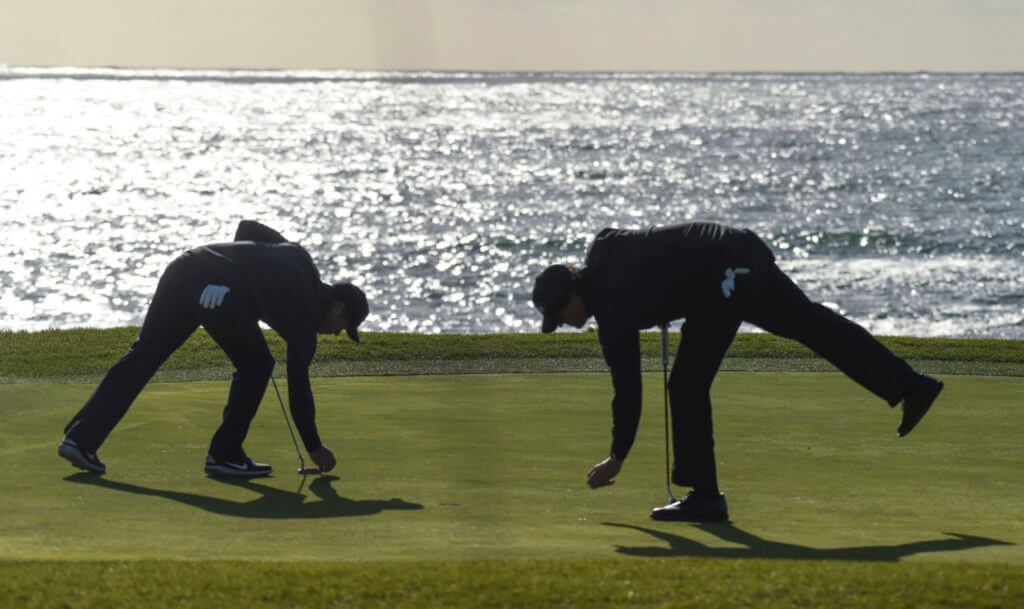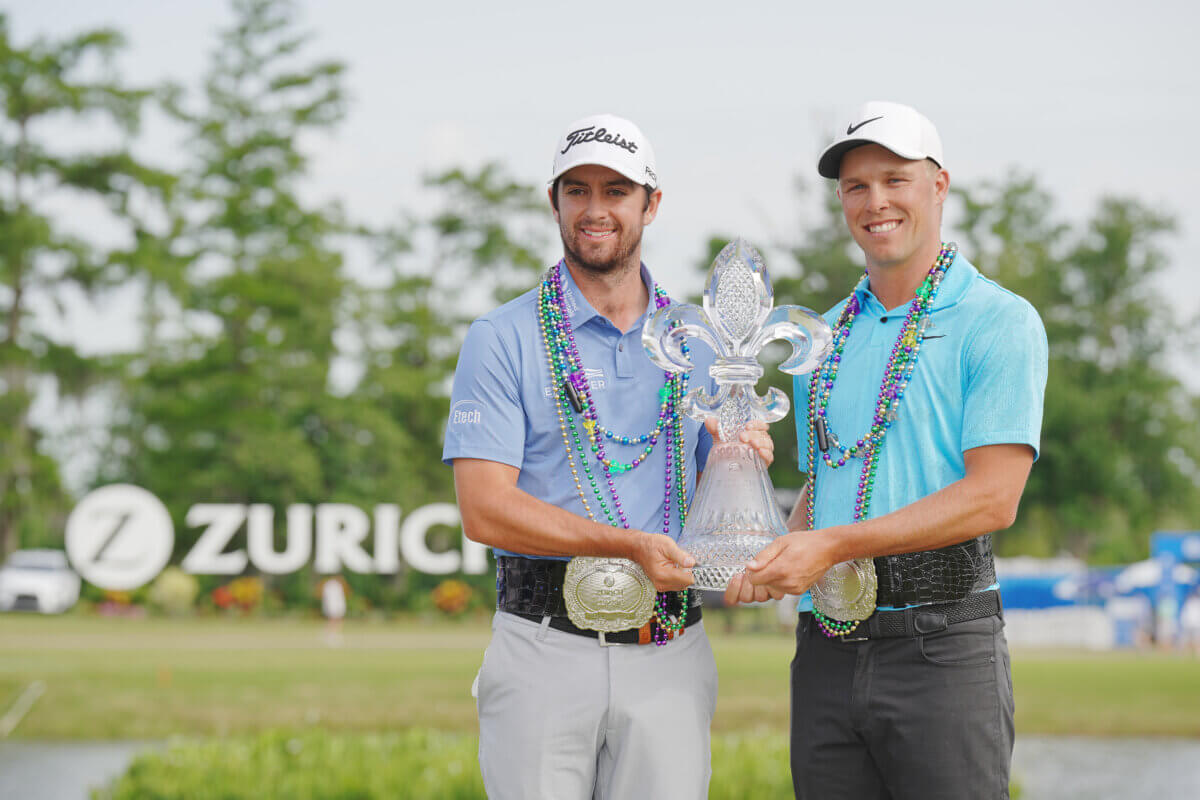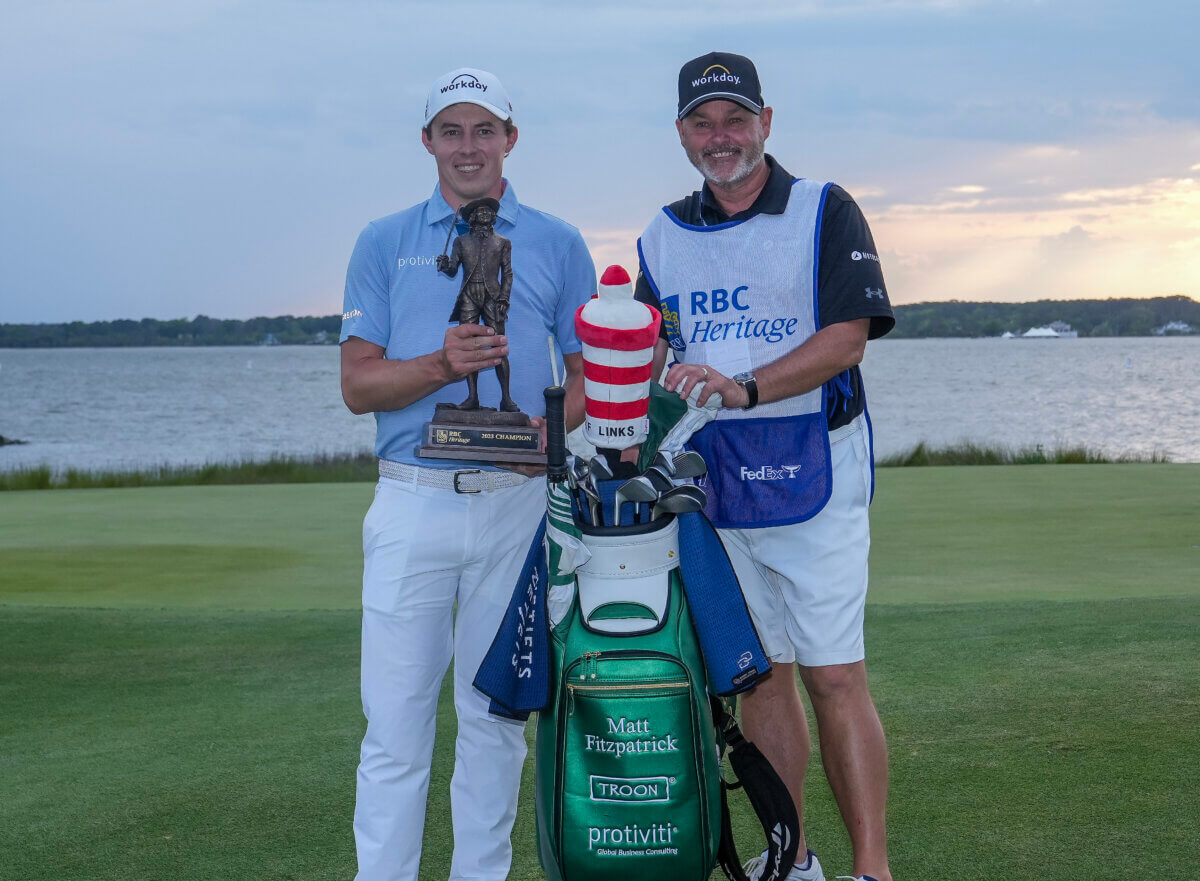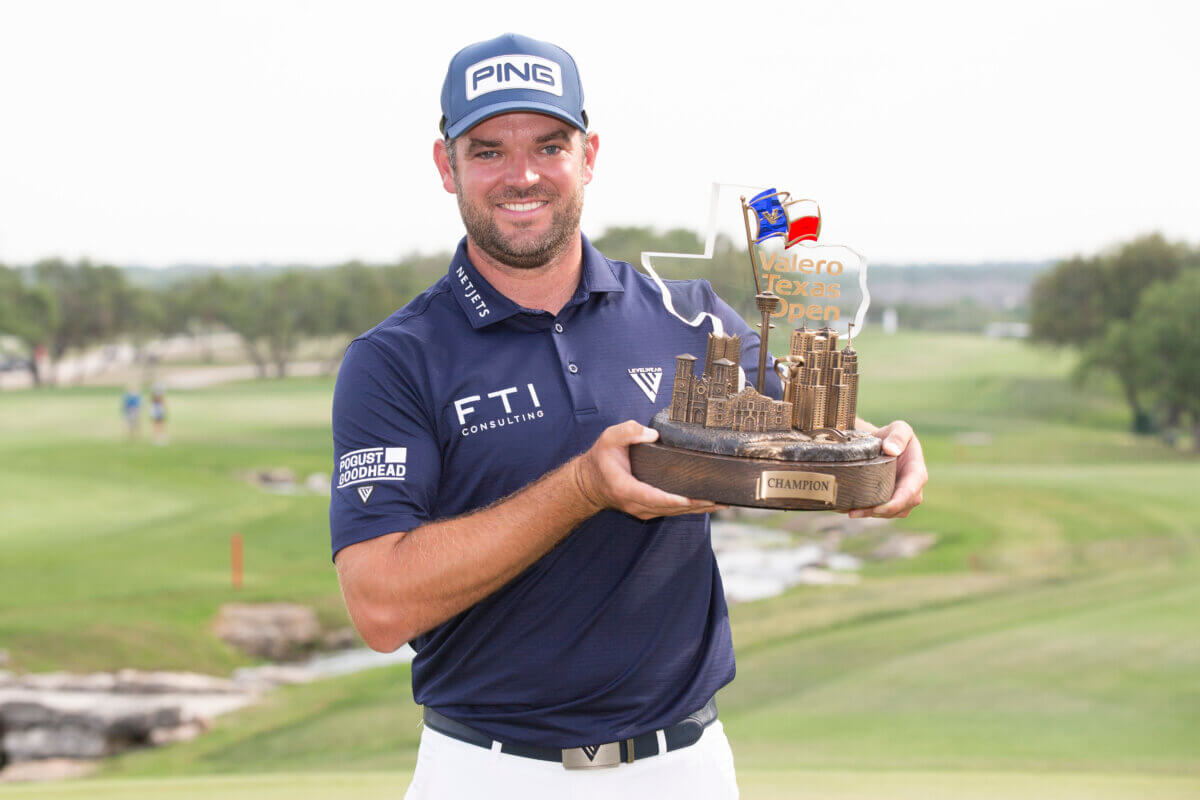Phil Mickelson uses special ball marker from an original Pebble Beach caddie… his grandfather

On Monday morning, Phil Mickelson will take a three-stroke lead into the final two holes of the 2019 AT&T Pebble Beach Pro-Am.
If he closes it out – and there’s no reason to believe he won’t – it will remarkably be the five-time major winner’s fifth victory in the event (and, to get everyone a little more excited, the U.S. Open returns to Pebble in June… it’s the only major Lefty lacks in his pursuit of a career Grand Slam).
Clearly, Pebble Beach is a special place for Mickelson.
But even if his record on Monterey Peninsula weren’t just about as spectacular as anyone else out there (a win Monday would tie him for most all-time at Pebble – five – with Mark O’Meara), it would still be an extra special place.
Why, you ask?
Mickelson’s maternal grandfather, Al Santos, was one of the original Pebble Beach caddies when the iconic course opened in 1919.
During Sunday’s telecast, CBS’s Jim Nantz noted that the ball marker used by Mickelson at Pebble Beach is a silver dollar that belonged to Santos. Nantz explained that Santos used to rub the coin in hopes of a better life for he and his family.
Clearly, that worked out.
The coin eventually found its way to Mickelson, who only uses it when he plays at Pebble Beach.
Mickelson, who has played at Pebble Beach as a pro since 1992, was actually asked about Pebble Beach and its special meaning to him earlier this week. He mentioned his grandfather.
“There’s a few things that within our family that go back to this place where my grandfather grew up here and he was one of the original caddies in the caddie group,” Mickelson said. “And he would go around here for 25, 30 cents a loop. And when we would talk about this place and what it meant to him growing up, and so there’s an emotional tie to this place. I don’t think it has anything to do with why I’ve played well here in the past, but you never know, it’s just I always enjoy coming here.”
In a 2013 article from the San Diego Union-Tribune – a year after Mickelson’s fourth victory at Pebble – writer Tod Leonard had more on Santos:
Al Santos, born in 1906, grew up in a tiny house in Monterey within walking distance of San Carlos Cathedral. His parents were devout Catholics who settled on the California coast, arriving from Portugal by way of Hawaii. The family business was fishing and they lived a hand-to-mouth existence. Al once recalled that he had to wear cardboard inserts to cover the holes in the soles of his shoes.
“His parents couldn’t buy him shoes,” Mary Mickelson, Al’s daughter and Phil’s mother, said, “so that’s why he started caddying.”
Al would recall for his family that he was about 11 when he went to work as a caddie at Del Monte Golf Course, which opened in 1897. Al said he hustled to get to the course early so he could walk two loops a day, making 25 cents per bag.
Then in 1919, the Pebble Beach Golf Links debuted, and though Mary Mickelson has no idea how her father got from town out to the course, she knows that he was among the first caddies there. There is a photograph of the first troupe of loopers, and dressed for work were Al and his brother, John. Al is scowling, as if he’s just swallowed a spoonful of cod liver oil.
Phil was close to his grandfather. Leonard writes that each time Mickelson won on the PGA Tour, he would give Santos a tournament flag to hang in his kitchen. Obviously, those walls filled up quickly and, as Leonard writes, Santos told Phil, “Don’t bring me another flag unless it’s from a major.”
Unfortunately, Santos would pass in early 2004, just months before Phil’s first major victory, the 2004 Masters.
That silver dollar you’ll see Mickelson use on Monday – or any year – at Pebble is from 1900, six years before Santos was born.
“It’s just cool,” Phil told Leonard in 2013, “to have that money he cherished.”





